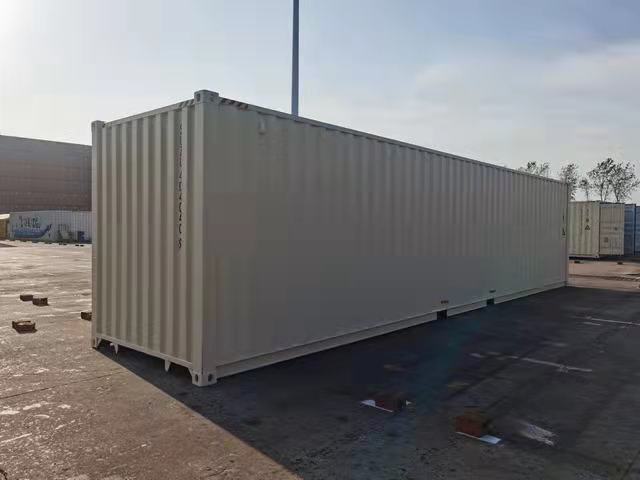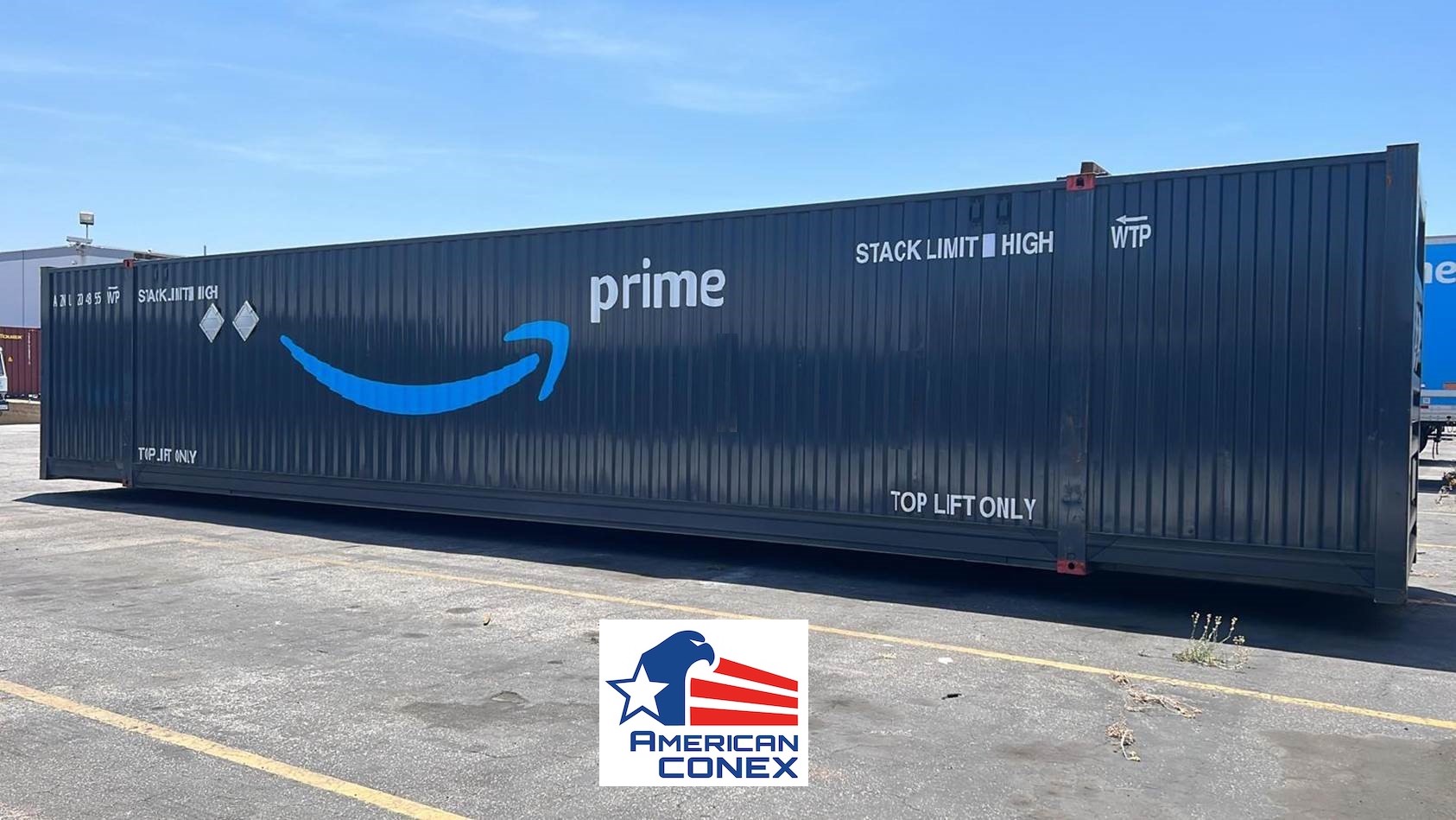Is a New Shipping Container 40 x 8 x 9.6 Right for Your Backyard Studio?
Is a New Shipping Container 40 x 8 x 9.6 Right for Your Backyard Studio?
Blog Article
The Ultimate Guide to Picking the Right Shipping Container for Your Requirements
When it involves selecting the best delivery container, understanding your details requirements is essential. You'll intend to take into account aspects like dimension, kind, and material to ensure you make the most effective choice. From standard dimensions to specialized alternatives, there's a great deal to discover. And also, budgeting for both the container and any kind of adjustments can make a huge distinction. Let's damage down the essential elements to help you find the excellent fit for your needs.
Understanding Delivery Container Sizes
When you're selecting a delivery container, comprehending the different dimensions offered is critical for making the best choice. Delivering containers generally come in common lengths of 20 and 40 feet, however you'll also find various other dimensions. Recognizing the dimension you require depends upon what you prepare to store or transport.If you're moving smaller items, a 20-foot container could be perfect, while larger deliveries usually need a 40-foot container. Remember that the elevation can also differ; high cube containers offer added vertical room, which can be helpful for taller goods - New Shipping Container 40' x 8' x 9’6".Before choosing, measure your cargo, and take into consideration exactly how much space you'll require for filling and discharging. Always factor in prospective future needs-- choosing a slightly larger container might save you trouble down the line. Eventually, picking the appropriate dimension will boost effectiveness and assure your items are safe and secure throughout transportation
Sorts Of Delivery Containers Available
There are numerous kinds of delivery containers offered, each made for particular purposes and cargo needs. The typical completely dry container is versatile, best for basic cargo. If you're shipping subject to spoiling goods, consider a cooled container, which maintains a regulated temperature. For oversized things, high dice containers supply added elevation, fitting taller loads.If you require to transport hefty machinery or tools, flat rack containers supply a sturdy base without wall surfaces. Open-top containers allow for very easy loading of tall cargo, with a detachable tarp covering for defense. If you're trying to find versatility, take into consideration a collapsible container that can be easily saved when not in use.Lastly, specialized containers like container containers are made use of for fluids, while vented containers are developed for bulk freight that needs air flow. Knowing your freight type will aid you pick the right container to fulfill your shipping needs effectively.
Product Factors To Consider for Sturdiness
When picking a shipping container, the product plays an essential function in its durability. You'll wish to evaluate the benefits of steel versus aluminum, particularly regarding rust resistance. Comprehending these variables can aid you make a more enlightened option for your delivery needs.
Steel vs. Light weight aluminum Containers
Just how do you select in between steel and light weight aluminum containers for your delivery requires? Start by taking into consideration toughness. Steel containers are durable and deal exceptional stamina, making them optimal for heavy loads and rough conditions. They stand up to damages from effects and are often less costly, which can be a major variable for budget-conscious buyers.On the other hand, light weight aluminum containers are light-weight, which can save you on shipping prices. They're much easier to navigate and are a great choice if you need to transfer goods regularly. Aluminum is generally much more pricey and less durable than steel. Evaluate your specific demands very carefully, consisting of weight, expense, and the sort of cargo you'll be shipping, to make the ideal selection for your situation.
Rust Resistance Variables
Picking the appropriate material doesn't just involve weight and expense; deterioration resistance plays a significant function in durability. When choosing a delivery container, think about the setting it'll deal with. Steel containers, while solid, can corrosion if not appropriately treated. Seek alternatives with safety finishings or galvanization to enhance their life expectancy. Light weight aluminum, on the various other hand, offers natural rust resistance, making it excellent for seaside locations or damp conditions. It can be a lot more expensive. In addition, assess the container's usage-- if it'll be revealed to chemicals or harsh climate, prioritize products that can endure these conditions. Purchasing a corrosion-resistant container now can save you from expensive repair services or substitutes down the line. Pick sensibly for lasting benefits.
Modifications and Modification Options
Delivering containers aren't just for moving items; they can be transformed to meet your certain needs via various adjustments and modification options. You can transform a standard container into a cozy workplace, a temporary retail shop, or look at here even a personal gym. The opportunities are almost endless.Think concerning adding windows, insulation, or air flow to improve convenience. You may additionally take into consideration electrical circuitry, plumbing, and even personalized shelving to enhance performance. If protection's an issue, reinforced locks can provide peace of mind.For visual appeal, you can repaint the container or include a distinct style to make it attract attention. Don't forget about floor covering options-- whether you want resilient plywood or something much more innovative, it can boost the space.Ultimately, customizing your delivery container to match your requirements can enhance functionality and develop a distinct setting that reflects your design.
Evaluating Your Transport Demands
When it involves utilizing your changed shipping container, understanding your transport needs is vital. Beginning by identifying what you'll be shipping-- whether it's hefty equipment, retail products, or individual things. Each sort of cargo has various demands pertaining to size, website here weight, and accessibility.Next, think about the range and mode of transport. Are you delivering locally, country wide, or globally? This impacts the container's design and capability. If you're making use of trucks, assure your container fits standard measurements for very easy loading and unloading.Additionally, believe concerning transportation conditions. Will your items need unique defense from weather condition or temperature fluctuations? If so, you might require insulation or air flow features in your container.Lastly, assess just how often you'll be transporting items. Regular shipments might need an extra resilient and versatile container to fulfill continuous demands. By attending to these factors, you'll be well-prepared to select the best shipping container for your demands.
Budgeting for Your Shipping Container
Establishing a spending plan for your delivery container is necessary for ensuring a smooth buying process. Figure out exactly how much you can afford to spend. Prices can vary substantially based on dimension, condition, and type. New containers typically set you back extra, but used ones can offer significant savings.Next, take into consideration any type of extra prices you could sustain, such as transportation fees, distribution fees, and alterations. If you plan to customize the container, variable in those expenditures as well. Study various suppliers to compare prices and locate the very best bargain that meets your needs.Don' t forget to include any type of permits or laws that may apply to your purchase and use the container. By plainly outlining your budget plan, you'll be much better prepared to make enlightened decisions, ensuring you obtain the appropriate container without damaging the bank.
Maintenance and Look After Longevity
To guarantee your delivery container lasts for several years, routine maintenance is vital. Begin by inspecting the exterior for rust, damages, and damage. If you spot any kind of problems, address them promptly to avoid further damage. Tidy the container regularly, both throughout, to remove dust, debris, and dampness that can result in corrosion.Ensure the doors secure effectively and oil the hinges to avoid corrosion and sticking. If you're best site using the container for storage space, consider including ventilation to reduce humidity and mold and mildew development. For extra defense, use a rust-inhibiting paint or sealant annually.If your container's situated in a harsh setting, like coastal locations, you may need to increase upkeep regularity. Maintain an eye on the flooring, as well; any indicators of wear ought to be repaired right now. With these basic actions, you'll prolong the life of your shipping container considerably.
Frequently Asked Questions
Exactly how Do I Find a Trustworthy Shipping Container Vendor?
To find a reliable shipping container vendor, begin by looking into on-line reviews, requesting for suggestions from pals or sector contacts, and comparing prices. Constantly examine their credentials and guarantee they supply top quality containers that meet your demands.

Can I Lease a Shipping Container Rather Than Acquiring?
Yes, you can most definitely rent a shipping container instead of acquiring one. Several suppliers supply rental options, which can conserve you cash and offer adaptability if you just need it for a short duration.
What Permits Are Needed for Container Positioning?

Are Shipping Containers Weatherproof and Appropriate for Outdoor Storage Space?
Yes, delivering containers are normally weatherproof, made to hold up against extreme conditions. Their robust construction maintains your products secure and completely dry, making them suitable for outdoor storage. Just ensure proper ventilation to avoid wetness buildup inside.
Just how Do I Move a Shipping Container Once Bought?

Report this page